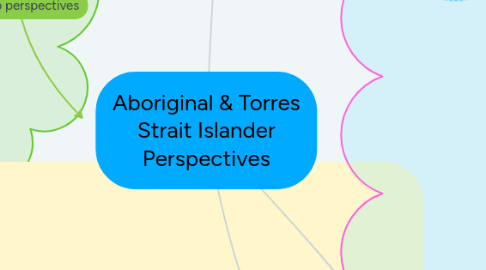
1. Rationale
1.1. Recognition
1.2. Culturally Responsive and appropriate
1.3. Compassion
1.4. Respectful
1.5. Social Justice
1.6. Anti-Racist
1.7. Being Inclusive
1.8. True History (accurate)
1.9. Communication
1.10. Belonging
2. 2.4 Understand and Respect for Aboriginal and Torres Strait Islander peoples
2.1. Histories
2.1.1. Invasion day/Australia Day
2.1.1.1. Historical Accuracy - Eg Captain Cook landed on Australias' Shores 3 days before 'Australia Day'
2.1.2. Stolen Generations
2.1.2.1. Impacts of this on current generation (inter-generational trauma)
2.1.2.2. Children removed from their families during the years (1910-1970)
2.2. ANZAC
2.2.1. The role the Indigenous played in the ANZAC's
2.2.1.1. Identify particular soldiers and their stories (WW1 or WW2)
2.3. Past policies
2.3.1. Racian descrimination act (1975)
2.3.2. 1968 Referendum
2.4. Connecting with the local community
2.4.1. Reach out to Aboriginal Elders
2.4.1.1. Utilising the local expertise of the community (also someone the community trusts and recognises as a positive role model)
3. Lesson Sequences
3.1. Year Level
3.1.1. 5
3.2. Learning Outcomes
3.2.1. Looking at the true history of Australia's past
3.2.1.1. Invasion day/Australia Day
3.2.1.2. Terra Nullius
3.2.1.2.1. Discuss origins and what this means.
3.2.2. Discuss how particular elements of drama express meaning
3.2.2.1. Watch and maybe perform cultural dances/songs to interpret meaning from them. E.g, How and why particular actions are done
3.3. Resources Needed
3.3.1. Reach out to an AIEO
3.3.2. Community elder/expert
3.3.3. Internet
3.3.3.1. Documentaries
3.3.3.2. Online dreaming stories
3.4. Student Assessment
3.4.1. responding to texts relating to dreaming stories
3.4.2. Exploring theme of work through dance and drama (cultural dances for example)
3.5. Cross Curriculum Priorities
3.5.1. Aboriginal and Torres Strait Islander Histories and Cultures
3.5.1.1. Explore traditional and contemporary artworks which connects to the relationships between People, Culture and Country/Place
3.6. Curriculum Links
3.6.1. From the Australian Curriculum
3.6.1.1. Understand that patterns of language interaction vary across social contexts and types of texts and that they help to signal social roles and relationships (ACELA1501)
3.6.1.1.1. Link to English learning area
3.6.1.2. Explain how the elements of drama and production elements communicate meaning by comparing drama from different social, cultural and historical contexts, including Aboriginal and Torres Strait Islander drama (ACADRR038)
3.6.1.2.1. Link to Drama
4. 1.4 Strategies for teaching Aboriginal and Torres Strait Islander students
4.1. Two-way learning
4.1.1. Listening and responding to your students
4.2. Focus on listening and speaking (not just written and grammatical structures)
4.2.1. Connect with the students so you do not create barriers between you and them
4.3. Building Respectful and trusting relationships in the class
4.3.1. Through being culturally appropriate, respectful, inclusive and fostering a sense of belonging
4.4. Provide a positive and supportive classroom learning environment
4.4.1. Respecting diversity in the classroom
4.4.2. Foster identity and reconsiliation
4.5. Story telling
4.5.1. Authentic learning experience
4.6. High Expectations
4.6.1. Expecting all students to achieve to the best of their ability
